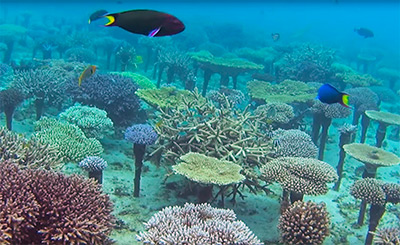Question
What exactly is the difference between a “sump” and a “refugium” (assuming there is a difference)? These are terms I didn’t hear in my 30-plus years as a freshwater aquarist, but I’ve heard them numerous times since starting my first saltwater tank.” – Submitted by Moira B
Answer
There is a distinction between a sump and refugium in marine aquarium hobby parlance, but sometimes there’s a degree of crossover between these two systems that can make it difficult to tell where one ends and the other begins. Let’s try to define each, and then briefly examine why they sometimes defy easy categorization.
Sump defined
A sump is a separate (but plumbed into the system) tank or reservoir, situated below the level of the aquarium, that is typically used to hold various life-support equipment—protein skimmer, heater, etc.—so it doesn’t detract from the aesthetics of the display. A sump also provides the added benefit of increasing the water volume of the overall system.
Refugium defined
A refugium is also a separate tank or reservoir that is plumbed into the aquarium system, but it serves a very different purpose. Essentially, a refugium offers a safe place—a refuge, if you will—in which to sequester organisms for one reason or another.
For example, hobbyists might want to create such an environment in order to culture microfauna (such as amphipods and copepods), bolster the system’s biofiltration capacity with additional live rock/sand, grow macroalgae for the purpose of nitrate reduction or feeding herbivorous fish, isolate injured or bullied specimens, or house interesting hitchhikers that may not be welcome in the display tank. I suppose one could say that a refugium usually enhances the biodiversity of the system in some way.
Where the lines blur
Salty Q&A: Is a Sump the Same as a Refugium?But as I mentioned above, sometimes the distinction between sump and refugium gets somewhat blurred. For instance, many hobbyists use multi-compartmented sumps, with some of the compartments holding equipment and others functioning as refugia. Also, even a rather “sterile,” strictly utilitarian sump can eventually begin to function as a refugium to a certain degree. If you look closely in my 29-gallon sump, especially at night, you’ll see a thriving population of pods and mysid shrimp (the latter were originally introduced several years ago as a live fish food)—probably because I’m lazy when it comes to siphoning out the detritus that settles there.



